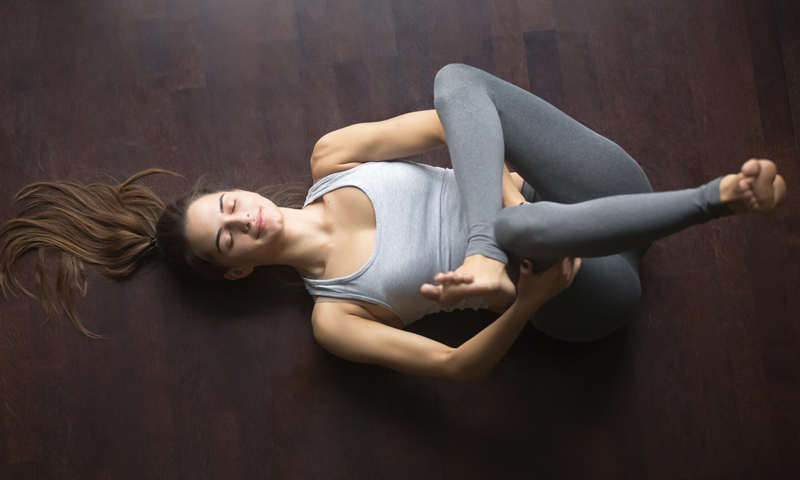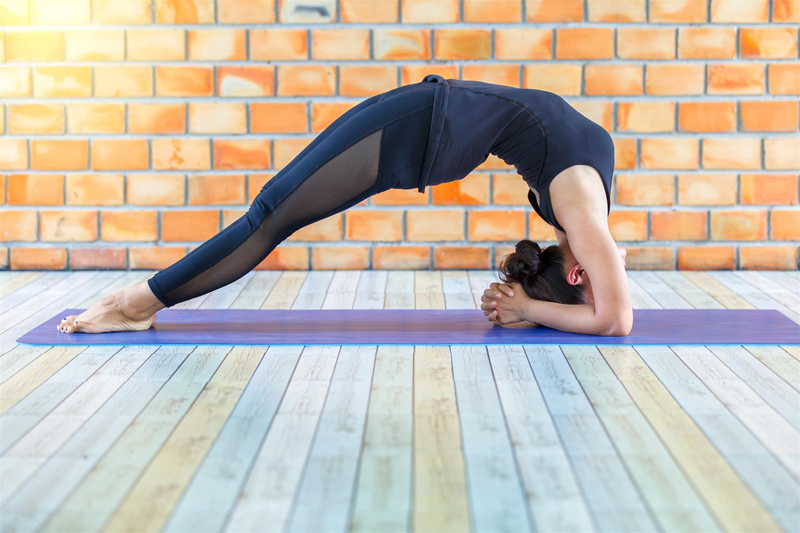
What is Green Yoga?
March 23, 2018
What is Bikram Yoga?
April 12, 2018What is Ananda Yoga?

Founded by yoga guru, Swami Kriyananda, Ananda Yoga is a variation of the Hatha Yoga system. From a young age, Kriyananda was a disciple of Indian Yogi, Paramahansa Yogananda. After many years of practice, Kriyananda decided to put together a new yoga system based on the teachings of Yogananda; a few years later, Ananda Yoga was born. While the practice is based on the Hatha style, Ananda concentrates on inner awareness, energy control, and reaching a higher state of consciousness. This is achieved through a combination of physical postures, breathing techniques, and affirmations. If you’re interested in practicing Ananda Yoga, it’s important to pick up some good-quality yoga gear before getting started. In this article, we explore the style in more detail.
The Goal of Ananda Yoga
The main goal of Ananda Yoga is to increase inner awareness and reach a higher sense of consciousness. This is achieved by allowing the body, mind, and spirit to work together as one. Kriyananda, the founder of Ananda Yoga, suggests that yoga encourages the body, mind, and spirit to work together as one.
According to the famous yogi: ‘Yoga implies perfect harmony of body, mind, and spirit. At a physical level, it implies glowing health. At a mental level, it implies the harmonious integration of the personality and the corresponding elimination of psychological ‘complexes’. At the level of the soul, yoga implies union of the ‘little self’ with the greater Self, of the ego with the vastness of cosmic awareness and of the individual’s soul with its infinite Divine source.’
Practice
Today, Ananda is practiced by yogis all over the world. While every Ananda class is unique, most sessions will have the same basic structure. Typically, this includes energy channeling exercises, physical postures, meditation, and affirmations. Below, we discuss each aspect further.
Energy Channeling Exercises
Most Ananda sessions will begin with energy channeling exercises. Yogis believe that the human body is built from cosmic energy. Sometimes, this energy can become blocked when traveling around the body. When this happens, we may experience symptoms of physical and emotional ill-health. Energy channeling exercises aim to cleanse our cosmic energy, or chi, and allow everything to run smoothly again. When used correctly, these exercises can revitalize every part of the body.
Yoga Sequence
Once the energy channeling exercises have been completed, practitioners will move onto a yoga sequence. This includes a series of physical yoga postures, or asanas, that help to channel energy flow inwards and upwards. Most sessions will begin with standing postures; this type of asana can help to tune into the energy and concentrate on the spine.
Next, yogis will move onto a series of floor poses. These are designed to release stale energy and invite new energy into the body by opening up the spine. Finally, practitioners will finish the sequence with inverted poses. Inverted poses are designed to increase energy flow to the brain.
Meditation and Affirmations
After the yoga sequence, practitioners will spend a few minutes meditating. During this time, yogis may use affirmations to reach higher consciousness. Affirmations are best described as encouraging words or phrases. Typically, these are spoken aloud to help practitioners achieve their ultimate goal. Additionally, affirmations can be practiced alongside asanas to reach a better understanding of the posture. When practiced during the ‘yoga sequence’ phase, each affirmation will work best with a certain asana. For Downward Facing Dog, the accompanying affirmation is ‘calmness radiates from every fiber of my being’ and for Tree Pose, the affirmation is ‘I am calm, I am poised’.

Popular Ananda Asanas
Tree Pose
Popular standing asana, Tree Pose, is often practiced at the beginning of a session. To practice this posture, begin by standing tall. Touch your big toes together, leaving half an inch of space between your heels. Next, bring your palms together in front of your chest and tighten your abdominal muscles. Gently shift your weight onto your right foot and press firmly through the ball of your heel to secure the position. Slowly lift your left foot off the ground, bending the knee as you do so. At this point, it’s worth taking a few seconds to establish a sense of balance. When you’re ready, place your left foot on the inside of your right thigh. You are in Tree Pose. Hold the posture for 30 seconds whilst breathing deeply.
Chair Pose
Chair Pose is another popular asana within Ananda Yoga. To practice the posture, stand tall with your big toes touching. Taking a deep breath in, raise your arms above your head and stretch your fingertips towards the ceiling. Bring your shoulders back and lengthen your neck. As you breathe out, bend your knees and begin to lower your bottom down and back, much like you would when sitting on a chair. At this stage, it’s important to not let your knees extend past your toes. You are in Chair Pose. Hold the posture for 30 seconds before returning to an upright position.
Child’s Pose
One of the most popular inversion postures of all time, Child’s Pose is a great asana to end your practice with. To begin, kneel on the floor and sit back on your heels. Next, slowly bring your forehead down towards the ground until it is resting in front of your knees. Finally, relax both arms to the sides of your body and feel the deep stretch along your back. You are in Childs Pose. Hold for 30 seconds while breathing deeply to increase the stretch.
In Summary
Whether you’re hoping to increase your internal happiness, or you’re more interested in channeling your cosmic energy, Ananda Yoga can help you to achieve your goal. If you’re a beginner, it may be worth finding a local Ananda Class. There, an experienced instructor will be able to advise you on the best way to practice. Not only will this help you to achieve the best results, but it will also minimize the risk of injury. Before attending an Ananda class, pick up some flexible yoga pants so you can move freely throughout the session.

